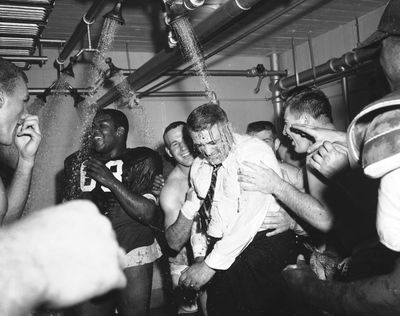An all-time first for venerable AP Top 25

Who’s No. 1?
The Associated Press began asking the most important question in sports in 1936, and 1,103 times since then the AP college football poll has provided an answer that has only led to more questions, such as: What? Why? Are you kidding?
The arguments about what team is best in college football have moved from bars and taverns to Facebook and Twitter, but if you think it’s more heated now then back in the day, consider:
Before the AP started asking its member sports writers and editors to vote for the top teams, then-sports editor Alan J. Gould in 1935 went about ranking them himself. In the final rankings he named Minnesota, Princeton and TCU co-No. 1s, and Gophers fans, as the story goes, hanged Gould in effigy.
“It created a storm in the Big Ten in general,” said Gould, who died in 1993, recalled on the 50th anniversary, “and Minneapolis-St. Paul, in particular.”
Gould quickly realized it was best to spread the blame, er, responsibility for the rankings around.
And so it’s been that way since, with various tweaks and turns. The Top 20. The Top 10, for a little while. And since 1989, the Top 25.
As college football has evolved, the poll’s role has changed. The Bowl Championship Series led to the College Football Playoff and at this point college football’s champion is sort of settled on the field. The AP still crowns a champion.
But it’s not just about who’s No. 1. That’s easy to figure out these days. It’s about who’s better. This team or that team? My team or your team. My conference or your conference. The media members who vote in the Top 25 are also charged with figuring out who’s No. 2. And No. 6. And No. 12 and 14 and 21 and so on and so forth. Just because we can all agree on a champion now doesn’t mean everything is settled.
The one constant in college football over the last 80 years has been the AP poll. It has helped link the past with the present and provided perspective. With that in mind, the AP is using 80 years of poll data and a simple formula to bring you the top 100 college football programs of the poll era.
To determine an all-time Top 100 for the first time, the AP counted poll appearances (one point) to mark consistency, No. 1 rankings (2 points) to acknowledge elite programs and gave a bonus for championships won (10 points).
The top five teams using those criteria: Ohio State, Oklahoma, Notre Dame, Alabama and Southern California.
Surely that will settle all the arguing. Right?